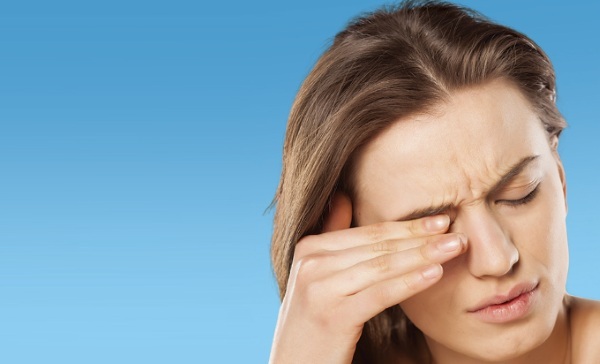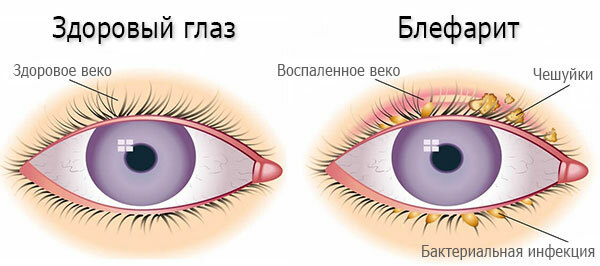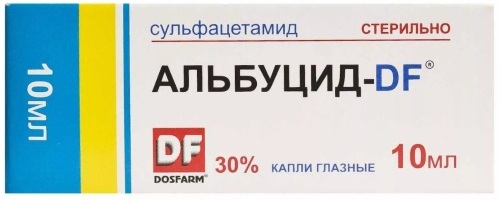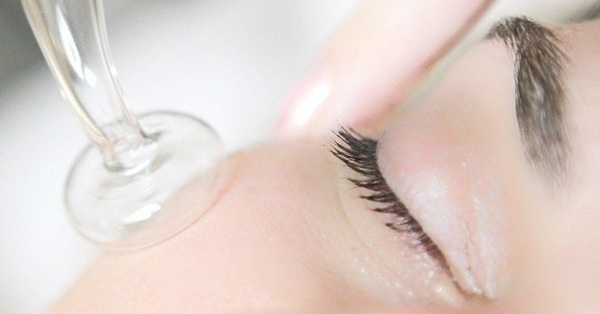Itchy eyes in the corners near the bridge of the nose in cases where the visual organ is susceptible to external stimuli or infectious diseases. To find out the cause of itching, you should pay attention to the presence of accompanying symptoms.
Record content:
- 1 Reasons for the appearance
- 2 Possible diseases
- 3 Diagnostics
- 4 When to see a doctor
- 5 Prophylaxis
-
6 Treatment methods
- 6.1 Medications
- 6.2 Traditional methods
- 6.3 Other methods
- 7 Possible complications
- 8 Video about eyelid diseases
Reasons for the appearance
The eyes itch in the inner corners near the bridge of the nose due to many reasons, which can be divided into 3 groups:
- factors associated with exposure to external stimuli;
- infectious eye diseases;
- systemic reasons associated with disturbances in the processes in the body.

The first group includes:
- eye fatigue associated with prolonged overexertion;
- irritation due to strong wind, frosty weather, exposure to sunlight;
- an allergic reaction to external irritants: contact with the eyes of dust, pollen, animal hair, the remains of cosmetics;
- reaction to chemical irritants: contact with the skin of aggressive substances, household chemicals;
- a bite of an insect;
- injury to the mucous membrane by a foreign object.
The causes of itching in the eye area, not related to the development of diseases, also include:
- avitaminosis;
- underwent surgery on the optic organ;
- dry eye syndrome associated with a decrease in the amount of lacrimal fluid.
Possible diseases
If we talk about the causes of an infectious nature, various inflammatory diseases of the optic organ can provoke itching in the area of the corners of the eyes.
These include:
| Conjunctivitis | Inflammatory lesions of the mucous membrane of the eye. Has a viral or bacterial etiology. | Symptoms:
|
| Barley | A purulent process in the eyelids caused by infection of the ciliary follicle. The cause of the appearance of pathology is a bacterial infection. |
|
| Blepharitis | Bilateral inflammatory process of the edge of the eyelids, characterized by a recurrent nature. |
|
| Dacryocystitis | Infectious lesion of the lacrimal sac of the eye. The disease can be acute and chronic, congenital and acquired. |
|
| Chaliazion | A benign neoplasm in the thickness of the eyelid, which appeared as a result of blockage and swelling of the sebaceous gland. Pathology is manifested by the presence of a nodule, which, as it grows, provokes the development of symptoms. |
|

Itching of the inner corners of the eye can also occur due to non-infectious diseases:
- cataract - pathology of the lens associated with the loss of its natural transparency and the development of increased sensitivity to light;
- glaucoma - a disease of a chronic nature, which is manifested by an increase in intraocular pressure and a decrease in visual acuity.
These disorders cause deterioration in the quality of vision. In this regard, a person involuntarily rubs his eyelids, thus trying to eliminate the factors that irritate him - turbidity, bifurcation of the objects seen. All of these actions can lead to itching in the inner and outer corners of the eyes.
The eyes itch in the corners near the bridge of the nose also due to systemic diseases in the body associated with the work of the endocrine system.
Diagnostics
When itching is triggered by the presence of inflammatory and infectious processes in the visual organ, careful diagnosis is necessary to determine the source of the infection. For this purpose, there are several diagnostic methods in ophthalmology - visual examination at a doctor's appointment, laboratory and instrumental studies.
A visual examination of the eyes is necessary to identify typical signs characteristic of the course of a particular disease. During the examination, the doctor may apply techniques such as inverting the eyelid and viewing it in transmitted side light.
In the examination process, biomicroscopy can be assigned - an instrumental examination of the tissues of the eye using a slit lamp. The device allows you to assess the condition of the anterior and posterior parts of the eyeball, using different types of lighting and image size.
Laboratory tests are most often used for inflammatory eye diseases: conjunctivitis, blepharitis, dacryocystitis. They allow you to establish the root cause of the inflammatory process to determine the causative agent of the infection.
Among the laboratory tests popular in ophthalmology are:
- bacteriological culture of a smear from the mucous membrane of the eye;
- cytology of a smear from the conjunctiva of the eye.
- scraping for the presence of chlamydial infection.
A bacteriological smear from the conjunctiva is taken using a special loop. The analysis is carried out in the morning before the patient is washed. A smear is taken from the transitional fold of the eyelid, which is previously inverted and the material is collected using a loop.
Then the loop is placed in a test tube with a nutrient medium, in which colonies are grown for 6-7 days. The presence of pathogenic microflora in the smear results indicates the presence of pathological processes. The cost of the research varies from 900 to 1500 rubles.
Cytological examination of a smear from the conjunctiva of the eye allows you to determine changes in the cellular composition of the connective tissue of the eyelids. The study is carried out by removing the scraping from the surface of the conjunctiva. The taken material is applied to glass, dried and sent to the laboratory for further study.
The analysis determines which type of conjunctivitis (bacterial, viral or allergic) provokes itching in the corners of the eyes and other accompanying symptoms. Analysis price - from 1200 rubles. and higher.
An analysis for the presence of chlamydial infection is carried out in case of suspicion of eye chlamydia. The fastest method for detecting chlamydial inclusions is the examination of conjunctival cells under a microscope after special staining.
With the help of a brush, the surface layer of epithelial cells is scraped. The taken cells are placed on glass, then a staining material is applied and examined under a microscope. Cell structures are colored in different shades, on the basis of which a conclusion is made about the presence or absence of chlamydia. The average cost of a research is 500-700 rubles.
When to see a doctor
Itching in the area of the corners can occur once during the day due to eye fatigue or the ingress of a foreign object into them. In this case, there should be no reason for concern, because the unpleasant sensations disappear immediately after the potential irritant is eliminated.
When itching persists over several days or weeks and is accompanied by additional symptoms, you should seek the advice of an ophthalmologist.
Alarming symptoms indicating the presence of a pathological process include:
- redness of the mucous membrane of the eye;
- swelling of the eyelids;
- sensation of a foreign body in the eyes;
- burning and soreness;
- decreased visual acuity;
- general malaise.
Prophylaxis
In order to avoid itching in the corners of the eyes, some preventive measures should be followed:
- prevent overwork of the visual organ;
- monitor personal hygiene;
- if a foreign object gets into the eye, remove it yourself, having previously treated your hands with an antiseptic;
- avoid contact with potential allergens with a tendency to contact allergies;

- in the presence of additional symptoms associated with the inflammatory process, seek the advice of a doctor.
Treatment methods
Eyes itch in the corners near the bridge of the nose when the reason lies in an infectious disease. In this case, an integrated approach is required using drugs of different pharmacological groups, as well as physiotherapy methods.
Medications
For the treatment of infectious or viral pathologies that provoke itching of the skin in the eye area, the following groups of medicines are used:
- antihistamine drops;
- antiviral agents;
- steroid drops;
- non-steroidal anti-inflammatory drugs;
- antibacterial drops and ointments;
- antiseptic solutions.
Antihistamines are used when an allergic reaction becomes the cause of the inflammatory process.
Similar products are produced in the form of eye drops:
- Opatanol - drops that have a pronounced antiallergic effect. It is used to treat allergic conjunctivitis. The drug is instilled in 1 drop into each conjunctival sac 2 times a day. Cost - from 470 rubles.
- Allergodil - antihistamine drops with a pronounced anti-inflammatory effect. The tool is used 2 times a day, instilling 1 drop into each affected eye. Cost - from 470 rubles.
Antiviral drugs are prescribed when the cause of itching and irritation is not pathogenic microbes, but the presence of a virus.
Among the most effective are:
- Ophthalmoferon - antiviral eye drops with interferon. In the acute stage of the disease, the drug is used 6-8 times a day, instilling 1 drop into each conjunctival sac. The price of the drug is from 280 rubles.
- Aktipol - an antiviral and immunomodulatory drug in the form of eye drops. In acute forms of viral infection, the agent is used up to 6-8 times a day, 1 drop. When the condition is normalized, the number of applications is reduced to 2-3 times a day. Price - about 400 rubles.
- Ganciclovir - lyophilisate for the preparation of infusions with antiviral action. Bury in the lower conjunctival sac 3-5 times a day for 7 days. The cost of the product is from 1700 rubles.
Preparations with glucoosteroids are not able to eliminate the bacterial causes of the disease, but are effective in relieving symptoms.
Non-steroidal eye drops include:
- Dexamethasone - a drug that has anti-inflammatory and anti-allergic effects. It is actively used to treat conjunctivitis and keratitis. The agent is instilled into the eye 1-2 drops 4-5 times a day. After two days of use, the frequency of applications is reduced to 3-4 times. The duration of treatment is 6-8 days. Cost - from 100 rubles.
- Tobradex - a combined preparation with antibacterial and anti-inflammatory effects. It is used in the treatment of conjunctivitis, blepharitis and keratitis. Drops are instilled in 1-2 drops every 4-6 hours. Price - 465 rubles.
Non-steroidal anti-inflammatory drugs (NSAIDs) are used in milder forms of the disease to relieve symptoms:
- Diclofenac - anti-inflammatory and analgesic agent in the form of drops. The drug is used 4-5 times a day, instilling 1 drop into each affected eye. Cost - from 30 rubles.
- Diklo-F - NSAIDs to relieve pain and inflammation. Release form: eye drops. It is used to treat non-infectious conjunctivitis. Apply 1-2 drops 3-4 times a day. The duration of treatment is 5 to 7 days. The price of the drug is 140 rubles.
- Indocollir - means in the form of eye drops, used to relieve pain during the inflammatory process. The drug is used 4 times a day, instilling 1 drop in each eye. Cost - from 400 rubles.
Antibacterial drugs are used for complicated eye infections.
Drops containing antibiotics include:
-
Albucid - eye drops with a broad spectrum of antimicrobial action. They are used to treat purulent conjunctivitis and blepharitis. The drug is used 5-6 times a day, instilling 1 drop into each affected eye. The duration of treatment is determined individually. Price - 40 rubles.

- Tobrex - a broad-spectrum antibiotic in the form of eye drops, which has a bactericidal effect. The dosage regimen is individual and depends on the severity and characteristics of the course of the disease. The cost is about 200 rubles.
- Levomycin - antibiotic eye drops that have a bacteriostatic effect. It is actively used in ophthalmology for the treatment of inflammatory diseases. The dosage regimen of the drug is determined individually. Price - from 10 rubles.
- Oftaquix - a drug from the group of fluoroquinolones in the form of drops. It is used to treat superficial infections of the optic organ. The tool is used up to 8 times a day in the first 2 days of treatment, instilling 1 drop in each eye, and then the frequency of use is reduced to 4 times a day. Cost - 220 rubles.
Eyes itch in the corners near the bridge of the nose with infectious diseases of the visual organ, so it is important to use antiseptic agents with disinfecting properties.
For washing use:
- Furacilin - preparation in the form of tablets for solution preparation. Reduces the clinical manifestations of inflammatory processes and has a powerful antibacterial effect. To prepare a solution, you need 2 tables. Dissolve the funds in 200 ml of boiling water, cool the resulting mixture and use for washing the eyes 2-3 times a day for 3-4 days. The cost of tablets is from 22 rubles.
- Chlorhexidine - antiseptic solution for topical use. Used to wash the eyes with conjunctivitis or blepharitis. The method of administration and dosage are determined individually. Price - from 25 rubles.
- Miramistin - a broad-spectrum antiseptic in the form of a solution that does not require dilution. The drug is used 3-4 times a day, instilling 2 drops of each conjunctival sac. The duration of treatment is 3-7 days. Cost - from 210 rubles.
Traditional methods
The eyes itch in the corners near the bridge of the nose, usually due to allergic reactions or a bacterial infection. The composition of folk remedies does not include components that have antimicrobial or antihistamine effects, therefore, traditional medicine is not suitable as the main treatment, but is used only as an auxiliary method.
Most often, folk recipes are used to alleviate the course of the disease:
-
A decoction of chamomile and calendula. 1 tsp. l. Pour 300 ml of water over dried plant flowers and boil over low heat for 5 minutes. Cool and strain the resulting solution, apply 3 times a day to wash the eyes. Chamomile and calendula are natural antiseptics with a disinfecting effect.

- Infusion of celandine. 2 h l. Pour 1 cup boiling water over the crushed plant and leave for 1 hour. Use the solution 3-4 times a day to rinse the eyes or apply compresses.
- A decoction of bay leaves. 2 tbsp. l. Pour 1 cup boiling water over chopped bay leaves and leave for 30 minutes. Use the cooled solution for lotions. To prepare them, dip 2 cotton pads in the resulting infusion and apply on the eyelids. Apply the product 2-3 times a day.
- Scarlet juice for lotions. Grind 1 large aloe leaf to the consistency of gruel, place it in cheesecloth and squeeze the juice. Dilute the prepared juice with water in a 1: 1 ratio. Use as an eye lotion. The duration of the procedure is 10 minutes.
- Fennel decoction. 1 tbsp. l. pour 200 ml of fennel water and put on medium heat. Boil the broth for 10 minutes, then strain. Dip 2 cotton pads into the solution and apply to the eyelids. The procedure is carried out 2 times a day for 10-15 minutes.
Other methods
When the itching in the corners is provoked by the presence of conjunctivitis or blepharitis, they use not only medication, but also physiotherapeutic treatment.
Physiotherapy has anti-inflammatory, bactericidal and restorative effects, normalizes blood circulation in the eyelids.
For infectious diseases of the eye, the following methods are used:
- Electrophoresis - exposure to constant electric current, which is combined with the introduction of medicinal substances through the mucous membranes. For the treatment of conjunctivitis and blepharitis, solutions of ascorbic acid, hydrocortisone, albucide are used. In some cases, an antibiotic, penicillin, is used. The duration of the session is 10-15 minutes. The course consists of 10-15 procedures performed daily.
-
Local darsonvalization - method using alternating impulsive currents with high voltage frequency. Under the influence of currents there is an improvement in tissue nutrition and relaxation of spasmodic vessels. The course consists of 10-12 sessions, the duration of which does not exceed 10 minutes.

- UHF therapy - a method of physiotherapy, which uses high frequency electromagnetic fields. The procedure has an anti-inflammatory effect and improves blood circulation in the tissues with blepharitis.
Possible complications
If you regularly ignore the itchy skin in the eye area, this can negatively affect the condition of the optic organ.
With advanced stages of bacterial and infectious diseases, complications are possible in the form of:
- development of purulent conjunctivitis;
- deterioration of vision;
- the formation of a stable photophobia;
- loss of eyelashes.
The eyes itch in the area of the inner corners near the bridge of the nose due to the influence of external or systemic factors, as well as due to the development of diseases of the optic organ.
Periodic itching caused by eye fatigue or the penetration of a foreign object into the mucous membrane is not dangerous and does not require specific treatment. In the case when itching is accompanied by other symptoms in the form of redness, swelling and soreness, a doctor's consultation is required.
Article design: Vladimir the Great
Video about eyelid diseases
Malysheva on blepharitis:



